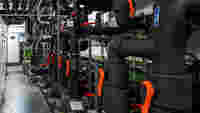Optimized compressed air, heating and cooling increase energy efficiency.

Connection technology and automation specialist WAGO now saves over a million kilowatt hours of energy at its production and logistics facility in Sondershausen in Thuringia – a gratifying achievement in energy conservation. The linchpin of this efficiency project is a combined heating, cooling and compressed air supply system.
